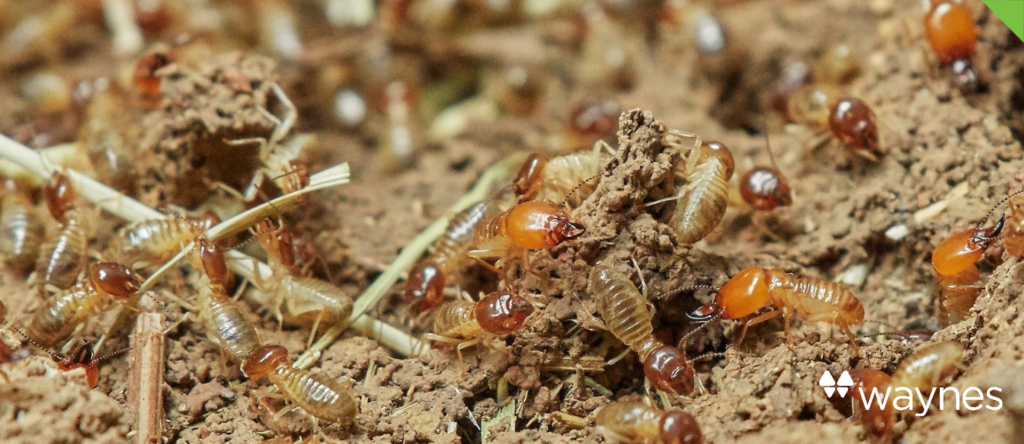‘Super’ can be a funny adjective. When we see ‘Super’ in front of ‘Man,’ this is a good thing. When we see ‘super’ in front of ‘termites,’ though, it’s not meant in the positive sense. All the positive aspects of Superman – super-fast, super-strong, and nearly invincible – become negative when applied to super-termites. Termites cause more than a billion dollars of damage each year in the US, and super termite infestations are on the rise due to the effects of climate change. So, why are these bad guys so ‘super’? And what should you look out for to avoid super-termites?
What Are Super Termites?
When we say super-termites, we are specifically speaking of the Formosan termite, a subterranean termite species invasive to the Southeastern US. They got the nickname ‘super termite’ because Formosan termites basically grow more quickly and live in larger colonies than other subterranean termite species. Formosan termites have a caste system, including a king, queen, workers, soldiers, and alates (winged termites – the sign of a mature colony). The queen of the colony has a lifespan of around 15 years, while workers live around 3-5 years. The queen is capable of producing 1,000 eggs per day, so that means if not killed she will produce around 10.9 million termite eggs in her lifetime. These eggs hatch within 2-4 weeks, and a colony will reach large enough numbers to cause damage and produce alates within 3 to 5 years. In comparison, other termite species take 6-8 years to reach maturity.
Other species have only a few hundred thousand termites per colony, but Formosan termites live in colonies of several million individuals that can consume up to 13 ounces of wood per day. For comparison, one 2×4 piece of lumber averages two pounds, or 32 ounces. A mature colony can cause severe structural damage to a building in as little as three months! And it’s not just wood. These critters have been known to chew through wallpaper and flooring, often remaining undetected until it’s too late. In addition, Formosan termites will forage up to 300 feet in soil, so they pose a threat not only to your home but your neighbor’s home as well if you have an infestation. They are the most active and aggressive termite species out of the 2,000 species currently known to science.
What Does A Super Termite Infestation Look Like?
So, what do you look out for to avoid Formosan termite infestations? Of course, you should be having regular inspections from Waynes, as we all know the best cure is prevention. However, sometimes infestations happen. There are a few telltale signs that you’ve got a Formosan termite infestation on your hands:
- You see swarmers (the colony alates) or piles of discarded wings. Formosan termites are light brown, and the alates almost look like flying ants. They will swarm around the entrances and windows of your home.
- You see mud tubes around the foundation of your home or in its crawl space. Formosan termites are subterranean termites, so they build these tubes to retain moisture while they travel between the colony and their food source – your house.
- The wood in your walls or window sills feels fragile and sounds hollow. Termites eat wood from the inside out, so if your window sills feel hollow when tapped, that could be a problem.
- You see uneven or bubbling paint on your walls. Of course, this could be a sign of other water drainage issues, but it can also be due to moisture from the colony and from termites traveling in your walls.
Even though these infestations are pesky, they can be eradicated. If you think you have super termite damage, call 866-WAYNES1 or visit callwaynes.com to get a termite prevention assessment of your home today.









